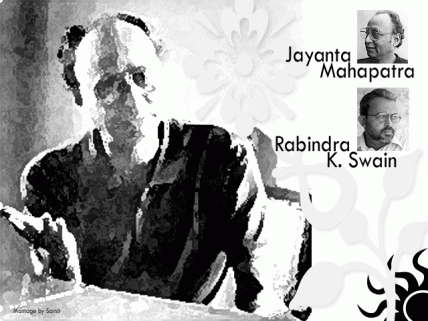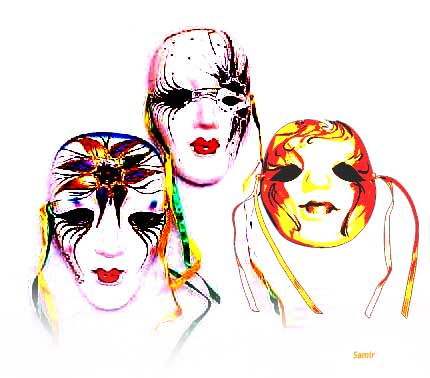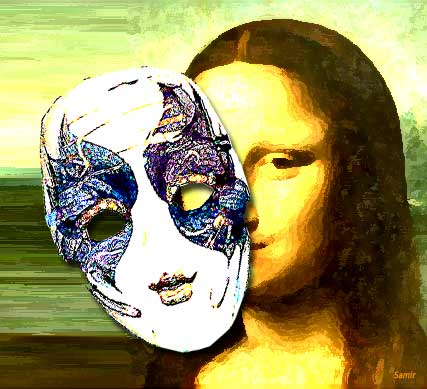Edward Said’s Orientalism can be summed up in three following points: first he talks of the distinction between pure and political knowledge, shows the power relation of any text to political, cultural, intellectual and moral domain; secondly he shows how the methodology used by the West to define and interpreting the Orient is just a part of the process that Orientalises the Orient and how his methodology of “historical generalization” is different from all these previous methodologies; and thirdly he clarifies his position by explaining his ethnic background, scholarly interests, and social circumstances he has experienced as an oriental.
Following Derrida it can be assumed the concept of “Orientalism” or “orient’ a part of a binary oppositions pair, where the occidental forms the other side of this binary oppositional coin. Levis Strauss’ Methodology , if applied to this binary opposition, we reach at the same conclusion as Edward Said, that these two (i.e. the concepts of Orient and Occident; or East and West ) are the two ‘entities’ that ‘support and to an extent reflect each other'(p.5). To make it more clear, ‘Orient’ has come to be a part of our consciousness due to the process of categorization by the ‘West’ – i.e. Westerners’ view or presupposition about their identity, made the idea of ‘Orient’ possible. As in a binary pair, one’s presence is defined in terms of the absence of ‘the other’ (i.e. the opposition to it).In case of the Orientalism , (i.e. the discipline that came to front after the completion of this process or the ‘event’, the sense in which Derrida had used the term in his essay Structure, Sign and play in the Discourse of Human sciences) the ‘East’ is defined in terms of the qualifications of the ‘West’. In Said’s words:”European culture gained in strength and identity by setting itself off against the Orient as a sort of surrogate and even under grounded self”.
And this process of establishing the identity of ‘the other’ by creating the identity of the self , is part of the process which said terms in this particular case as being “Orientalized” which means the moment one tries to understand which means the moment one tries to understand culture, history and ideas, one from that moment comes under their direct force. That means when one expresses his interpretation, (which is essentially an work of art) can no longer be external as croce has remarked: ‘A work of art is always internal; and what is called external is no longer a work of art’ (quoted in Rene Wellek’s essay The Fall of Literary history).
That’s why Said has avoided presenting any notion or definition of his subject in his book (i.e. Orientalism) rather he chooses a the path of indirectness, by placing in to the pages the various ideas related to the Orientalism that exist ‘spatially and complexly interlinked’ in his mind and are a part of his consciousness which ultimately he refers to as his subject i.e. the “Orientalism” – the “transdental signified”. He is aware that this “transcendental signified” has been a part of the “collective unconscious’ of the west and has been growing since the very time the west is conscious about the ‘other sidedness’ of his existence, on various levels – physical, as well as psychological. This has been since that time of its evolution, has been expressed in various manners making reference to different geographical cultural and ideological difference that exist between the west and the east. To avoid complexity of our interpretation we can simply put this as the fact that due to the ethno-centric attitude of the west there came the relative measurement of various dimensions in the different cultural values, belief systems and this ultimately formed the concept of the “Orient”.
Said also makes this point clear in his introduction : “The orient was Orientalised not only because it was discovered to be oriental in all those ways considered common place by an average nineteenth century European, but also because it could be – that is submitted to being – made oriental”.
This indicates that the very process of distinguishing orient from the occident is itself a process of Orientalising the orient. Said’s use of “historical generalizations” (p.4) – which he announces in his introduction as a different ‘methodological alternative’ also could not able to escape from being taking part in the process of Orientalization.
This haunts Said as in the last lines of the third chapter he confesses that the study of orient involves a continuous process of degredation in knowledge,”If the knowledge of the Orientalism has any meaning, it is in being a reminder of this seductive degradation of knowledge”.And perhaps writing of Orientalism by Said can be seen as the very next added part of this process which he himself indicates in the following line:”Orientalism failed to identify with human experience, failed also to see it as human experience […] if this book has any future use it will be as a modest contribution to that challenge, […] that system of thought like Orientalism , discourse of power , ideological fictions – mind-forg’d manacles – are too easily made, applied , and guarded”. And to which he concludes that the accompanied degradation to this is ‘Now perhaps more than before’ .
That means he himself studies the process of which he is a part of . We need to understand how Said has attempted to describe the process of ‘Orientalising the orient’ by men in the past before him ( of which he becomes a part of , by writing his book , by doing explanations on Orientalism – which is now the aim of our experiment, to understand how the process of his explanation (on Orientalism) has the similarities to the this above mentioned process.
Said uses a new kind of methodology to bring the whole matter related to Orientalism to light. He does so as explains that :
‘Orientalism is not an inert fact of nature’– i.e. it is not only related to geographical reality .
it would be [also] wrong to conclude that the orient was essentially an idea or a creation with no corresponding reality,
He says so because he knows that the geographical sectors as orient and occident are man made, but along with that there is ‘a brute reality’ which is exerted by the idea of orient if they are at all any orient exists in ideas .
The fact that Said’s belief system when comes to front has a centre which alters its meaning and deconstructs it as no particular opposition of the binary pair ‘idea / thing’ or ‘mental dimension/ physical dimension is valid for more than an instance, so the moment he makes a reference to idea associated with the orient he discards the physicality of the orient and vise versa. From such reason we can assume that when an expression on the orient is made it either lies about orient or discard it it is because by ‘lying’ or creating myth about it, one can contribute to its existence, and the moment some expression is made to explain it, it is no more ‘that’ and hence it blows out its existence. Said points to this complexity in his introduction: “One ought never to assume that the structure of Orientalism is nothing more than a structure of lies or myths which, were the truth about them to be told, or simply blow away”!
What Said has done to solve this problem is that he coined a new methodology which he termed as “representation”.
That means he stresses through his book Orientalism on the aspect of how than whatof Orientalism. He tries to explain how orient is created than what it really is .
He through his historical generalization, moves from Flaubert to Sacy then to Renan and other Orientalists who build their own structures of Orientalism which forms a stack of structures, where no particular structure has while trying to understand the the ‘what’ aspects of Orientalism unconsciously created it .
Thus what the West did in the past to learn on orient created orient. and thus orient became an western invention.
That means that we are , by following Said , in fact starting a process of unlearning about the Orientalism , in order to let orient exist as it is . but the moment we attempt to learn about orient we are in fact from that moment starts off another chain reaction of changes in its existence—which ultimately leads us to no truth as the moment he we understand it , our understanding itself becomes a part of the invention of the orient.
He explains the epistemological aspect and historical aspect of the Orientalism which can be summarized in the following points:
the first phase of Orientalists were those who saw the rise of the Muslims in the Asian region as a threat to Christianity – during this period the Orient was defined as the geographical regions that was under the control of the so called pagan , barbarous non-Christian races , especially Muslims. They were considered as threats to the West , i.e. the Christian occupied European geography. This can be traced in Chaucer’s writings, Mendellive’s stories.
the next phase of the Orientalists were those who depending upon the first phase description began to explore these areas. During renaissance the spirit started and this continued for centuries. During this phase many militaristic adventures were made especially by that of Napoleon who planned to conquer the Egypt on both military and cultural ground. This phase continued till the creation of Suez canal and Orientalists like Renan, Sacy and Flaubert gave shape to the idea of Orientalism on the basis of their either experiences in the Orient or the views that they had possessed from their predecessors, which was shaped by the western attempt to define its supremacy over the concept that was termed as the Orient by the first phase definitions.
the third or the latest phase was brought forward by the process of de-colonization where the modern west men began to emphasize the differences of the Orient from the Occident; east from the West.
After this categorization Said put forward the theory of the ‘power relationship of knowladge’—how all these Orientalists of the three phase while defining the Orient have contributed to the process of the Orientalisation.
This is the power relationship of knowledge in the context of the orient.
The west tried to find his identity through an opposition to it and named it orient.
The ethenocentricism of the west made the distinguistions of other cultures from it and labeled all oppositional charactered cultures as oriental cultures.
Different parts of the west thus had diffeent views on orient due to their different geographical locations , which has created their own taste , own customs etc. thus “culectiveconciousness” of one part of the west saw its opposition in a manner , which was perhaps had subordinate place in the list of oppositions made by another part of the west. Thus their own definition of the orient differs .
This is exemplified by Said in the 4th section of the 2nd chapter tiltled as “Pilgrims and pilgrimages, British and French”
Well one may arise the question that if the ethenic values shaped by geographical locations in the west vary from each other , how can it be possible that they did not see each other as oppositions .
To this explanation can be found in the fact which Levis Strauss as well as Derrida terms as scandals . to put it plainly scandals are the characters that belong to the both oppositional sides.
And there in every culture there exists scandals. Due to the most common properties in between them (for instance Christanity) each part of west never saw each other as oppositional representation of it.
Now this makes it clear that there are as many number orients created as the western groups.
And thus orient is a set of imagination, values, ideas, customs, geographical locations which can be seen as the result of many attempts to explain self identity in terms of the other . thus orient was created out of the process of making an orient.
The next phase of Orientalists are those who, following the preconceived orient in their western mind tried to learn about it . Thus they became the part of the creators of the orient. Such phase includes Baudelaine and Sacy etc.
Thus the supposed to be ‘discoverers’ are themselves the inventers of the orient.
And the modern Orientalists who tried to categorise the diffent aspect of the orient became themselves another addition to such inventers.
Thus what we see in above that the process of learning is it self the mode of creation of Orientalism.
This is what Said explains as power relation ship of knowledge i.e. here knowledge exerts its power to build what it is about.
And this is the part of various degree of complex hegemony, which also includes the military and political hegemony f the orient ( in their general accepted meanings).
Another part to understand here is that the power relationship is essentially political here. It is so, because if the creation of orient as a subordinated field or structure can be considered as one of the political dimension of hegemony, then the learning about orient also owns this political dimension.
To make it more clear the moment the concept of Orientalism came to mind of the first westerner, it came as an opposition to his own existence. That makes it clear that we see orient in terms of its oppositional values of the west, i.e. Orient has been explained in terms of west and never the opposite. This ethenocentrism in knowledge about orient can be seen as a political hegemony. And we have no solution to it as we can explain the other of us in terms of what we are not. After that moment any reference made to us will be made only when we believe that the other exists . so , after that even if we are defined in the other’s terms still the underlying causes of the existence of the other is in our terms. So, if one will say that if orient starts to define west as its opposition then also , the existence of the orient is made from in the terms of the west. And hence the knowledge of the orient has its political hegemony intact.
© Samir K. Dash, 2004






